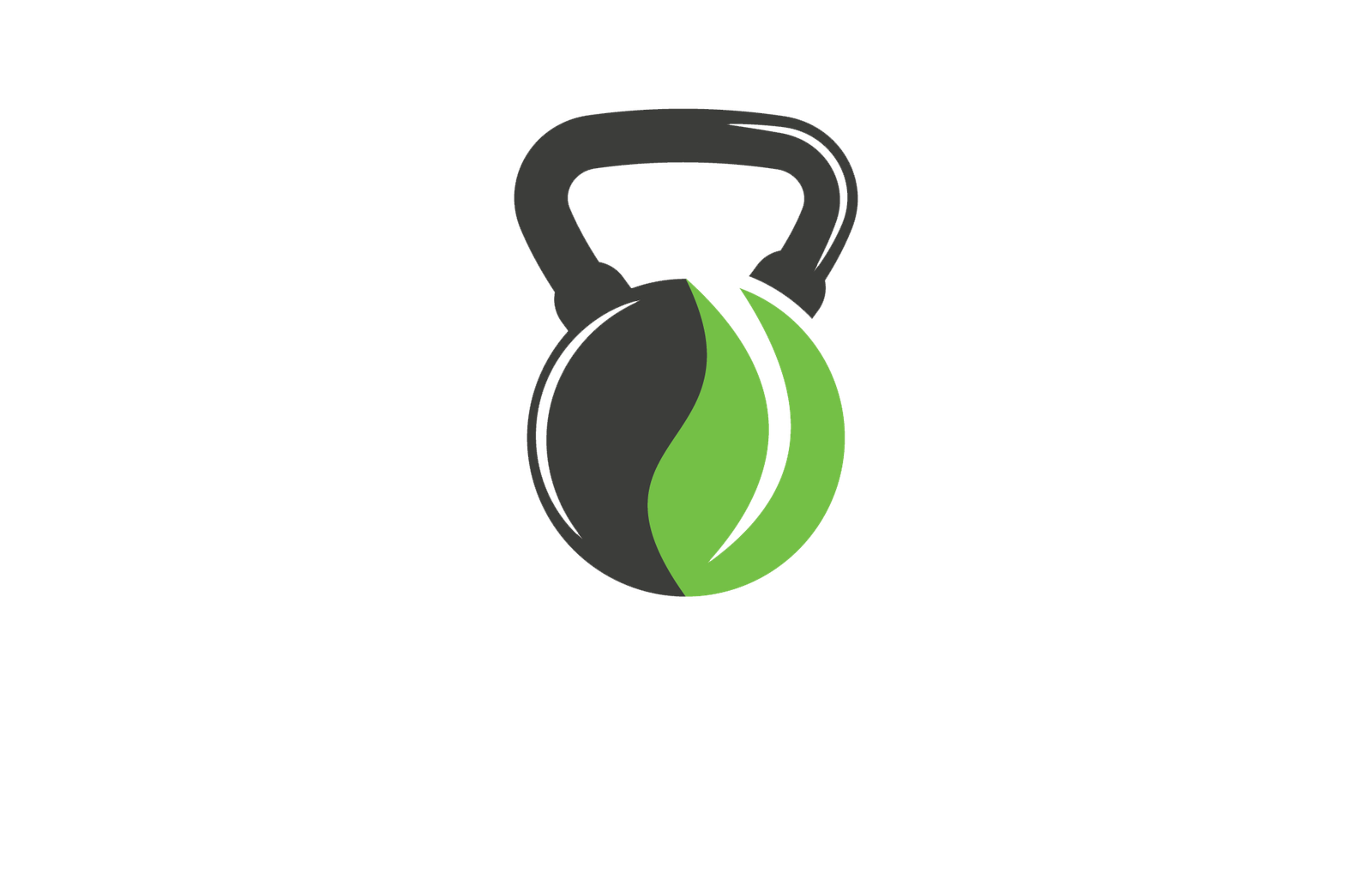Don't miss our holiday offer - 20% OFF!

Combining HIIT With Strength Training
Achieve a powerful fitness transformation by combining HIIT's calorie-torching intensity with strength training's muscle-building power, but how?
We've probably all heard the buzz around HIIT (High-Intensity Interval Training) and strength training, but did you know that combining these two powerhouses can ignite a fitness routine that torches calories, builds lean muscle, and boosts metabolism like never before? By mixing HIIT's calorie-burning intensity with strength training's muscle-building power, we can create a transformative workout routine that leaves us feeling healthier, happier, and more motivated. So, how do we get started? Let's explore the benefits, strategies, and tips for combining HIIT with strength training to take our fitness to the next level.
Key Takeaways
- Alternating between HIIT and strength training days or incorporating both into a single session facilitates flexible scheduling and balanced fitness.
- Focusing on 3-4 days of strength training and 2-3 days of HIIT cardio achieves a balanced routine that combines the benefits of both.
- Identifying fitness goals and evaluating current fitness level helps determine the perfect blend of HIIT and strength training exercises for a personalized approach.
- Mixing and matching exercises keeps the routine engaging and motivating, while dividing workout routines into manageable chunks allows for a balanced fitness regimen.
- Periodizing workout routines into specific phases guarantees constant challenge and avoids plateaus in both HIIT and strength training.
Benefits of HIIT Workouts
We've all experienced the thrill of pushing our bodies to new heights, and HIIT workouts are no exception – they offer a multitude of benefits that can revolutionize our fitness journey. One of the most significant advantages of HIIT is its ability to improve insulin sensitivity. When we incorporate HIIT into our routine, our bodies become more efficient at using insulin, reducing the risk of developing type 2 diabetes. Additionally, HIIT has been shown to enhance our metabolism, allowing us to burn calories at an accelerated rate, even after our workout is complete. This means we can enjoy the benefits of weight loss, increased energy, and improved overall health. In addition, HIIT workouts are known to boost our cardiovascular health, increase muscle strength, and even reduce stress levels. By incorporating HIIT into our fitness routine, we can experience a transformative change in our bodies, leading to a healthier, happier us. With its numerous benefits, it's no wonder HIIT has become a staple in many fitness enthusiasts' workout routines.
Importance of Strength Training
As we explore the importance of strength training, we'll discover how it can revolutionize our fitness journey. We'll examine how building muscle mass can boost our metabolism and enhance overall health, as well as how increasing bone density can reduce the risk of injuries and osteoporosis. By incorporating strength training into our workouts, we'll tap into a stronger, healthier, and more resilient version of ourselves.
Building Muscle Mass
By incorporating strength training into our HIIT workouts, we can substantially boost our muscle mass, which is essential for achieving peak physical performance and overall health. Building muscle mass not only enhances our physical appearance but also improves our overall athletic performance. When we engage in strength training, we create micro-tears in our muscles, which our bodies then repair by building new muscle tissue. This process strengthens our muscles, making them more efficient and resilient.
| Benefits of Building Muscle Mass | Description |
|---|---|
| Improved Muscle Memory | Strength training helps develop muscle memory, allowing our bodies to adapt to new exercises and movements more efficiently. |
| Reduced Muscle Imbalances | Building muscle mass helps reduce muscle imbalances, which can lead to injuries and poor posture. |
| Enhanced Athletic Performance | Increased muscle mass enables us to perform daily tasks and athletic activities with more power and endurance. |
| Better Overall Health | Building muscle mass boosts our metabolism, leading to weight loss and improved overall health. |
Increasing Bone Density
Through consistent strength training, we strengthen our bones, increasing their density and reducing the risk of osteoporosis, fractures, and osteopenia. As we age, our bone density naturally decreases, making it essential to incorporate bone health strategies into our fitness routine. By doing so, we can prevent osteoporosis, a debilitating condition characterized by brittle and porous bones.
Resistance exercises, in particular, play a significant role in osteoporosis prevention. When we challenge our muscles with weights or resistance bands, our bones adapt by becoming denser and stronger. This, in turn, reduces the risk of fractures and osteopenia, a precursor to osteoporosis. Additionally, strength training promotes better balance and coordination, reducing the likelihood of falls that can lead to fractures.
Building Muscle Endurance Fast
As we focus on building muscle endurance fast, we're going to explore the key strategies that'll get us there quickly and efficiently. We'll develop muscle power through targeted exercises that challenge our strength and speed, and we'll incorporate endurance-boosting moves that'll have us performing at our best in no time. By mastering these techniques, we'll be able to push ourselves to new heights and achieve the fitness goals we've always wanted.
Muscle Power Development
We crank up our muscle power development by incorporating explosive movements that challenge our muscles to adapt quickly, allowing us to build muscle endurance fast. This is where the magic happens, folks! By focusing on muscle explosiveness, we're not just building strength, we're building the ability to generate force quickly. This is critical for power output, which is essential for high-intensity exercises like HIIT. Think about it: when we're doing burpees or jump squats, we need to be able to explosively generate force to complete the movement efficiently. By incorporating exercises that challenge our muscle explosiveness, we're able to increase our power output, which in turn allows us to perform at a higher intensity. This is where the gains happen, friends! By combining strength training with HIIT, we're able to build muscle endurance fast and take our workouts to the next level. So, let's get explosive and take our fitness to new heights!
Endurance Boosting Exercises
By incorporating exercises that specifically target muscle endurance, we can substantially boost our stamina and tackle high-intensity workouts with confidence. As we push ourselves to new limits, our bodies adapt, and our endurance soars. This is especially vital when combining HIIT with strength training, as it allows us to power through even the toughest cardio blasts.
To take our endurance to the next level, we need to focus on exercises that challenge our muscles to work efficiently for extended periods. Here are three essential exercises to add to our routine:
- Burpees: This full-body exercise is a masterclass in endurance, engaging our arms, legs, and core simultaneously.
- Jumping Lunges: This plyometric exercise not only boosts our power but also torches calories and increases our aerobic capacity.
- Mountain Climbers: This high-intensity drill is a surefire way to get our hearts racing and our muscles burning.
How to Create a Balanced Routine
Creating a balanced routine begins with identifying our fitness goals and evaluating our current fitness level, lifestyle, and schedule to determine the perfect blend of HIIT and strength training exercises. By taking a personalized approach, we can tailor our workout routine to our individual needs and preferences. This means considering our strengths, weaknesses, and goals, as well as our availability and energy levels.
To facilitate flexible scheduling, we can alternate between HIIT and strength training days, or incorporate both into a single session. For example, we might do a HIIT workout in the morning and follow up with strength training in the evening. Alternatively, we can combine the two, using strength training exercises as part of our HIIT routine. By mixing and matching, we can create a routine that keeps us engaged and motivated. By finding a balance that works for us, we can maintain consistency and make progress towards our fitness goals.
Sample Workout Schedules
As we move forward with our HIIT and strength training journey, we'll explore sample workout schedules that cater to our unique needs and goals. We'll start by examining HIIT-focused morning routines that get our days off to a strong start, then move on to workout split routines that optimize our strength gains, and finally, we'll discuss evening strength sessions that help us wind down and recover. By incorporating these schedules into our regimen, we'll be able to maximize our results and reach new heights of fitness.
HIIT-Focused Morning Routines
Let's kick-start our day with a bang by incorporating HIIT-focused morning routines that will get our hearts racing and muscles pumping in no time! Morning motivation is key to setting a strong foundation for the rest of our day, and HIIT is an excellent way to boost our energy levels and get us moving. By incorporating HIIT into our morning routines, we can experience a range of benefits, from improved cardiovascular health to increased fat loss.
Here are just a few reasons why HIIT-focused morning routines are a game-changer:
- Increased energy: HIIT gets our hearts racing and releases endorphins, giving us a natural energy boost to tackle the day ahead.
- Improved mental clarity: The intense physical activity helps increase blood flow to the brain, leaving us feeling more focused and alert.
- Better time management: By fitting in a HIIT session in the morning, we can set a productive tone for the rest of the day and make the most of our time.
Workout Split Routines
We'll divide our workout routines into manageable chunks, focusing on 3-4 days of strength training and 2-3 days of HIIT cardio to achieve a balanced fitness regimen. This split routine allows us to prioritize specific muscle groups and avoid overtraining. We can periodize our workout routine into specific phases, dedicating certain weeks to strength gains and others to cardiovascular endurance. For instance, we might dedicate four weeks to building strength, followed by two weeks of intense HIIT cardio. This workout periodization guarantees we're constantly challenging ourselves and avoiding plateaus.
When it comes to split routine variations, we have plenty of options. We might opt for a upper/lower split, where we dedicate two days to upper body strength training and two days to lower body. Alternatively, we could try a push/pull/legs split, targeting specific muscle groups each day. The key is to find a routine that works for us and our schedule, while allowing our bodies adequate rest and recovery time. By mixing and matching different split routines, we can avoid boredom and prevent our bodies from adapting to a single routine.
Evening Strength Sessions
We're now going to explore sample workout schedules for our evening strength sessions, which will help us make the most of our time and energy after a long day. By incorporating strength training into our evening routine, we can boost our nighttime motivation and set ourselves up for success.
Here are three reasons why evening strength sessions can be incredibly effective:
- Increased productivity: By getting our workout out of the way, we can free up time for relaxation and self-care in the evening.
- Improved sleep: A good strength training session can help us wind down and prepare our bodies for a restful night's sleep.
- Better recovery: Post-workout stretching in the evening can help our muscles recover more efficiently, setting us up for a stronger tomorrow.
Effective HIIT Exercises
What makes a HIIT exercise truly effective is its ability to push our heart rates up and keep them there, while also engaging our muscles in a way that drives significant growth and improvement. When we're designing our HIIT workouts, we want to choose exercises that will get our hearts racing and our muscles firing on all cylinders.
That's why we're fans of exercises like burpees, jump squats, and mountain climbers – they're all great for getting our hearts pumping and our muscles working together. But we also know that not everyone is ready to start with these intense exercises right away. That's why we always make sure to include HIIT warm-ups and exercise modifications in our workouts.
For example, if we're doing a workout that includes burpees, we might start with a warm-up of jump squats or step-ups to get our hearts rate up and our muscles ready. And if we're working with beginners, we might modify the exercise to remove the jump or add an extra step to make it more accessible. By incorporating these modifications, we can make HIIT more accessible to everyone, regardless of fitness level.
Strength Training for Beginners
As we begin our strength training journey, we must prioritize building a solid foundation, especially if we're new to resistance exercises. We've all been there – feeling intimidated by the gym environment, unsure of where to start, and worried about looking foolish in front of seasoned gym-goers. But, we're here to tell you that it's normal to feel that way, and it's okay to start from scratch.
Here are 3 things to remember as we initiate our fitness journeys:
- Start small: Don't try to tackle too much too soon. Begin with light weights and progress gradually to avoid injury and burnout.
- Focus on form: It's more important to focus on proper technique than the amount of weight we're lifting. This will help us avoid injuries and get the most out of our workouts.
- Celebrate small wins: Don't wait until we've reached our ultimate fitness goals to celebrate. Acknowledge and celebrate our small victories along the way to stay motivated and encouraged.
Common Mistakes to Avoid
Let's face it, even with a solid foundation in place, it's easy to fall into common pitfalls that can hinder our progress and undermine our strength training efforts. One of the most critical mistakes to avoid is overtraining. We've all been there – pushing ourselves too hard, too frequently, and ignoring the warning signs of fatigue. But overtraining risks not only hinder our progress but also increase the likelihood of injury. We must prioritize listening to our bodies and take rest days when needed. We must also prioritize injury prevention by incorporating proper warm-ups, cool-downs, and stretching exercises into our routine. Additionally, we should focus on progressive overload, gradually increasing the intensity and weight to avoid plateaus and prevent overreliance on a single muscle group. By being mindful of these common mistakes, we can optimize our strength training and HIIT workouts, ensuring we're making consistent progress and minimizing the risk of injury.
Nutrition for Optimal Results
We fuel our bodies with the right foods to maximize the benefits of our HIIT and strength training workouts. A well-planned nutrition strategy is crucial to support our fitness goals. Macro balancing is key, ensuring we consume the right amount of protein, carbohydrates, and healthy fats to support muscle growth and recovery.
Timing is everything when it comes to food intake. Eating the right foods at the right time can significantly impact our performance and progress. Here are three critical times to focus on:
- Pre-workout: Fuel up with complex carbs and lean protein to boost energy and endurance.
- Post-workout: Refuel with a balanced mix of carbs and protein to aid in recovery and muscle repair.
- Before Bed: Consume a slow-digesting protein source and complex carbs to support muscle recovery and growth during sleep.
Progressive Overload Explained
Now that we've got our nutrition strategy in place, it's time to talk about the most effective way to challenge ourselves in the gym: progressive overload. This concept is vital for achieving muscle adaptation and continued progress in our fitness journey. In other words, progressive overload means gradually increasing the intensity of our workouts by adding weight, reps, or sets over time. This forces our muscles to adapt to the new demands, promoting growth and strength gains.
We've all experienced weight fluctuations, but progressive overload helps us break through plateaus and achieve consistent progress. By incrementally increasing the weight or resistance, we stimulate muscle growth and strength gains. It's imperative to challenge ourselves in this way to avoid stagnation and guarantee our bodies continue to adapt and change. As we push ourselves harder, our muscles will respond by growing stronger and more resilient. By incorporating progressive overload into our strength training routine, we'll be on the fast track to achieving our fitness goals and enjoying the many benefits that come with it.
Rest and Recovery Strategies
As we push our bodies to new heights with progressive overload, we must not forget that adequate rest and recovery strategies are equally essential to achieving our fitness goals. It's easy to get caught up in the excitement of pushing ourselves harder, but neglecting rest and recovery can lead to burnout, injury, and stagnation.
To avoid this, we need to prioritize active relaxation and mindful unwinding. Here are three key strategies to incorporate into our routine:
- Schedule downtime: Treat rest days as non-negotiable appointments with ourselves, just as we would with our toughest workouts.
- Practice relaxation techniques: Regularly engage in activities like meditation, deep breathing, or yoga to calm our minds and bodies.
- Listen to our bodies: Pay attention to our physical and emotional signals, taking rest days or modifying our workouts as needed to avoid exhaustion.
Measuring Progress and Success
Tracking our progress is essential to staying motivated and refining our workout strategies, so let's define what success looks like for ourselves. When we set specific, measurable goals, we can monitor our progress and make adjustments as needed. Goal setting is key to achieving success in our HIIT and strength training journey. By setting both short-term and long-term goals, we can break down our progress into manageable milestones.
To effectively track our progress, we need to identify the metrics that matter most to us. This might include metrics like weight lifted, distance covered, or time completed. Regularly tracking these metrics allows us to see how we're improving over time. We can also use progress photos, body fat percentage, or circumference measurements to track changes in our physique. By regularly evaluating our progress, we can refine our workout strategies and make data-driven decisions to optimize our results. By combining goal setting with progress tracking, we'll stay motivated, focused, and driven to reach our fitness goals.
Creating a Long-Term Plan
With our goals and progress tracking system in place, we're ready to create a long-term plan that will help us sustain our motivation and momentum over time. By setting specific, measurable, and achievable goals, we'll be able to maintain our focus and drive. A well-structured plan will also help us overcome plateaus and stay committed to our fitness journey.
Here are three key elements to include in our long-term plan:
- Regular assessments: Schedule regular check-ins to track our progress, adjust our strategy, and celebrate our successes.
- Accountability systems: Share our goals and progress with a workout buddy or fitness coach to increase motivation and accountability.
- Flexibility and adaptation: Allow for adjustments to our plan as needed, and be open to trying new exercises, routines, and strategies to avoid plateaus and prevent boredom.
Frequently Asked Questions
Can I Do HIIT Workouts With a Prior Injury or Chronic Condition?
'We can still crush HIIT workouts with prior injuries or chronic conditions! We modify exercises for Injury Modifications and prioritize Safe Intensity to guarantee a sweat-tastic, injury-free session that leaves us feeling empowered, not exhausted.'
Will Strength Training Make Me Bulky or Muscular?
"As we step into the weightlifting world, a common fear whispers in our ears: 'Will we bulk up like bodybuilders?' But let's shatter this myth: strength training helps us build lean muscle tone, refining our body composition, not turning us into the Hulk!"
Can I Combine HIIT With Yoga or Pilates for Flexibility?
We love combining HIIT with mindful movement practices like yoga or Pilates for flexibility, as they enhance our Flexibility Flow and balance out the intensity, allowing us to recover and recharge.
How Often Can I Change My Workout Routine for Progressive Results?
We refresh our workout routine every 4-6 weeks to avoid plateaus, incorporating workout variety and progressive overload to keep challenging ourselves, ensuring consistent growth and avoiding mental and physical stagnation.
Are There Specific Warm-Up and Cool-Down Exercises for HIIT Workouts?
"We prioritize HIIT preparation by incorporating dynamic warm-ups, like leg swings and burpees, to boost Workout Efficiency; afterwards, we cool down with static stretches to prevent injury and promote recovery."
Conclusion
As we wrap up our journey of combining HIIT with strength training, we're left wondering: what's holding us back from achieving our fitness goals? By now, we've learned how to create a balanced routine, progressive overload, and rest and recovery strategies. The key takeaway is to stay committed, consistent, and patient. We've got the tools, now it's time to put in the work. Will we take the first step towards a stronger, leaner, and more resilient us?



